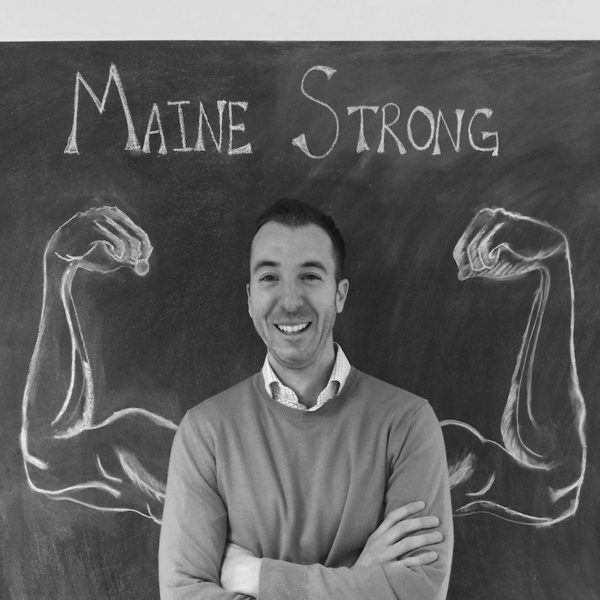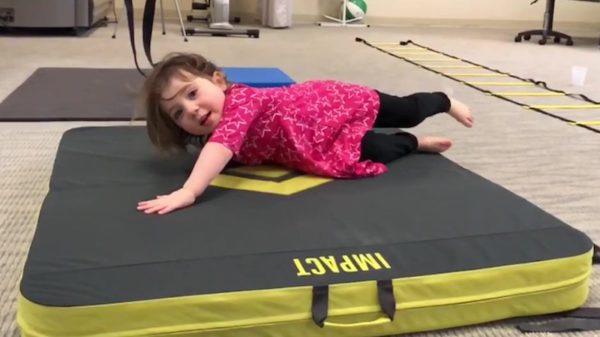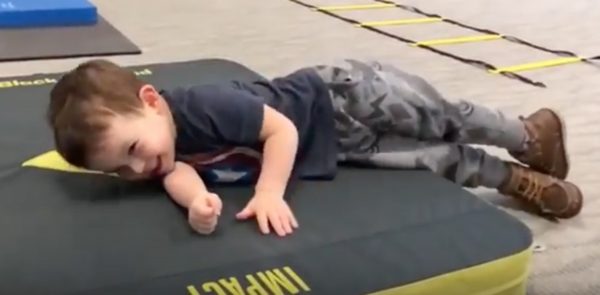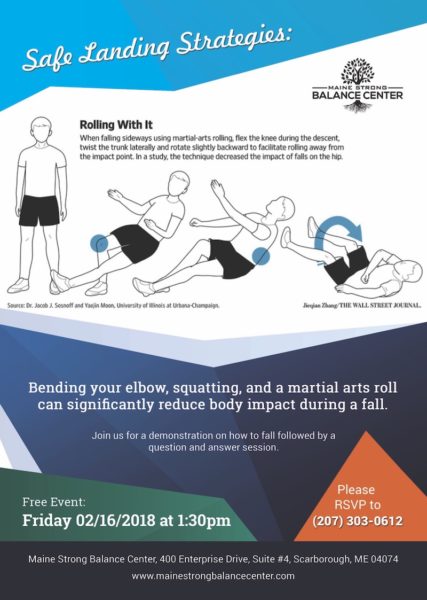Several years ago, I was taking a leisurely stroll along the beach when two good-sized dogs ran by me at breakneck speed. In a flash, one spun around and hit me. Up into the air I went and then down onto the hard packed sand. I landed on my rear end with so much force it caused a compression fracture in my lower thoracic spine.
I’m ok now, but during a recent conversation with Jason Adour, a physical therapist who owns Maine Strong Balance Center, the memory came rushing back. I learned from him that when you fall on your butt if you bend your knees and roll with the fall, you can lessen the force of the impact. When I fell, my legs were pretty much straight out in front of me.
What I realized from talking to Jason is that if I had fallen a different way, I might not have been so badly injured. Now, it’s easy to be a Monday morning quarterback and think of all the things I coulda shoulda done. But still, if I’d known something about falling techniques or safe landing strategies, as Jason calls them, in those split seconds, I might have been able to exert a bit of control.
As its name implies, at Maine Strong Balance Center, the focus is on balance. They specialize in balance rehabilitation and fall prevention, particularly in older people and people with neurological issues.
Jason told me that if you improve your balance, you can reduce the risk of falling. His approach to improving balance includes teaching people how to fall in a way that might minimize damage — like pulling your knees up if you fall like I did.
Lessons in falling from toddlers
For the purpose of this blog post, Jason shared some pictures of his kids falling the right way AND the wrong way.
First up is Ava falling with her arm outstretched. Jason said that’s a common protective reaction that can result in a fractured wrist, arm, or shoulder.
When Ava’s brother Owen fell onto the mat, he had a slight bend to his elbow and he also rolled with the fall. That’s what you want to try to do.
Admittedly, toddlers have a lot of advantages over adults. They’re closer to the ground and don’t weigh as much so there’s less of an impact when they fall. “In addition,” said Jason, “they do a lot of falling. As a result, they don’t fear falling and end up rolling with their falls as opposed to bracing themselves as an adult would.”
What can happen as we age
When I fell, I was in my 50s and my biggest risk factor was being in the wrong place at the wrong time. I’m a bit older now and as we age, our risk of falling increases for a variety of reasons. Here are a few:
- Poor vision
- Can make it harder to see obstacles and hazards in your path.
- Medications
- Side effects can include dizziness, drowsiness, and low blood pressure.
- Blood pressure
- Postural or orthostatic low blood pressure is common in older people. If you’re sitting, scooching, or lying down, you’re apt to feel dizzy and light-headed for a few minutes when you stand up.
- Chronic disease
- May cause weakness, impaired balance, cognitive issues.
That list I just shared may seem a bit discouraging, but Jason strongly believes that we can have some control over the fear of falling as we age. “Evidence has shown that with targeted interventions we can improve balance and reduce fall risk by up to 40%,” he said. “With some ingenuity and demonstrations on how to fall, we can help reduce fear and improve quality of life. We’d also like to reframe aging in a more positive way. We are generally living longer, which is a gift so let’s make the most of it!.”
Get stronger
Along with teaching people how to fall, he also encourages them to exercise. It not only strengthens their muscles, it’s good for everything else, too — head to toe.
He says the sit to stand, or chair rise exercise is one of the best ways to improve the strength in your thighs and buttocks. The goal is to do it without using your hands.
Practice and plan
As it did for me, falls often happen in a flash, but they can also develop slowly. Either way, it’s good to be armed with some knowledge. Jason’s advice:
Practice
This is something you could attempt on your own (with the clearance of your doctor) or practice with a physical therapist. You don’t have to fall from standing, you could practice from your knees in bed, for example. Practice will allow these techniques to become more reflexive.
Plan
Keep it simple but develop a strategy. For example, if you know you tend to lose your balance and go backward, remember to bend your knees if you fall. If you tend to lose your balance and go forward, remember to bend your elbow and roll with it if you fall.
If you’d like to learn some safe landing strategies, Jason is hosting a free event at the Maine Strong Balance Center on Friday, February 16th at 1:30 pm. It’s located at 400 Enterprise Drive, Suite #4, Scarborough, Maine. He’ll not only talk about safe strategies, he’ll demonstrate a few for you. For more information or to RSVP, call 207.303.0612.







Leave A Comment